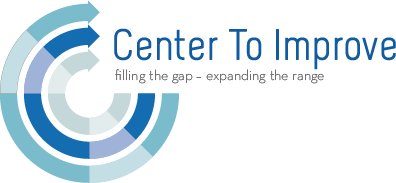Er du en Ensom Ulv som klarer alt på egen hånd. Det er flott unntatt at du ibland blir sliten og ensom. Les om hvordan du klarer det på egen hånd med hjelp av andre.
Artikkelen som vi legger opp her i bloggen er del 5 i en serie av artikler skrevne av Karen Kimsey-House. Original tittelen heter «Disrupt Your Life in a Good Way, Pt. 5: Whatever You Do, Don`t Ask for Help… or You Might Discover It Works» og ble publisert i Huffington Post 07/02/2012.
I know your type: You’re a winner. You’ve got the toys. Everyone thinks you’re amazing. Fiercely independent and self-minded, you’ve learned the hard w ay that the one person you can always rely on is you. And you have an awe-inspiring ability to make it on your own. Asking for help? Hah! That’s for the weak ones. Other people tend to only complicate matters. You have what it takes to compete, you love to win and be at the top. Relationships? Not so much.
ay that the one person you can always rely on is you. And you have an awe-inspiring ability to make it on your own. Asking for help? Hah! That’s for the weak ones. Other people tend to only complicate matters. You have what it takes to compete, you love to win and be at the top. Relationships? Not so much.
Yes, you, my friend, are a Lone Wolf.
That’s great, except sometimes you get weary. Carrying an incredible burden all by yourself and making sure all your bases are covered is exhausting. And lonely. You feel the gap between you and others widening. The cost of self-reliance is that you don’t know how to use the resources all around you. You don’t know how to really collaborate with others because you’ve never developed your ability to relate or connect. And since you try to do everything yourself, sometimes you do things poorly and then you have to cover your failures.
Think of a wolf pack. They each have their place… they work together to hunt, raise cubs and find shelter. None of them could actually do it alone, but even if you can, what is it like to do all of that on your own? I read a story once about wolves working together to bring down an older elk. Two cornered it and made it back up to the others waiting in the shadows. It would have to be a mighty hungry Lone Wolf to pull that one off all on its own.
What about legacy? How could a Lone Wolf raise cubs? Feed them? Care for them? There is absolutely no way I could have launched or grown my company CTI to what it is today on my own. I needed help. Not just assistance but the combined resources and talents of other people. Lone Wolves don’t have access to those things because they choose not to.
Westerners tend to be a sea of Lone Wolves who don’t ask for help. We came from a tribal system that operated in small, isolated circles. Eventually, to grow and expand, we had to learn how to break out of that more grounded but constricting society. With tribes, everyone is connected but roles are set. Becoming individualized was a response to the controlling norms of organized societal structure. The U.S. was founded for that reason.
But now the pendulum has swung too far over. We’ve become isolated in our big houses. The Internet makes it easier to not have to be with people while offering an illusion of connection. The Lone Wolf model focuses on the masculine energy of independence, originality and doing it on one’s own. The feminine qualities of collaboration and interconnectedness have largely been tamped out. Many feel that if we collaborate with others, we’re not as powerful. This is a distorted view of power. We tend to believe the most powerful person in the room is the one with the most toys or who has the highest position rather than the one with the richest relationships. The business world and the corporate structure feeds that.
When we become disconnected from the people in our lives, of course we feel loneliness. We lose out on a lot of joy and we can’t see our own blind spots — and that greatly limits what we can create. We are meant to be in close relationship with others. Relationships are -[; the whole is more than the sum of its parts. We need others in our lives to help us see what we cannot and create from each other’s gifts. My husband Henry has imagination, vision and creativity but can’t make a doughnut real. I make things happen in real life: I’m the Gitt-‘er-Done-Gal. Together, we manifest great ideas.
When I was a kid, we all had to participate in yard work. I wanted to please my dad so much that I raked until my hands bled and then later until my scabs and blisters bled. I was trying to gain his love from my accomplishment. I would have walked through fire to impress him. I couldn’t let him think for a second that my sisters (or anybody else) were tougher, smarter or stronger than me. I was willing to be the Lone Wolf to compete for love, when collaborating with my family would have ultimately given me more love and connection.
So if Lone Wolf doesn’t ultimately work, why do so many of us continue to operate this way? We’re trained. Trained to feel that it’s weakness to need others. At some point in our lives, everyone has made themselves vulnerable and asked for help. We might have gotten hurt or laughed at or been disappointed or shamed. Many people take that personally and shut down from trying that tactic again. Other Lone Wolves simply fear connection with others. People crave and fear intimacy equally and simultaneously. It’s uncomfortable and there’s friction as we realize we’re the same yet different.
We get a lot of Lone Wolves in our Co-Active Leadership Program. I remember one in particular a few years back. He was an IBM salesperson. He looked fabulous, was arrogant and intellectually sophisticated. He was having trouble with his marriage. In the program, there is an assignment where participants have to pair up with another cohort and create and hold an event or workshop together. This man suddenly awakened to the notion that relationships were at the center of everything. It was too late to save his marriage but once he could say, «I don’t know what to do, I need your help,» he became more successful and a lot happier.
People are longing for connection… the potential for it is always right there; we just have to open our hearts to it. If you put relationships first and take time to really connect with the people that you work and live with, life is so much more satisfying. Here is how:
- Stop and take a breath. Slow down your pace.
- Let go of what there is to do and put your attention on the other person. Not the one you wish was there or think ought to be there. You can’t be connected to a different person than who is actually there. For my first 18 years, I tried to have a father who was different than the real one. How well do you think that worked? Get present with the flawed and struggling person and just accept them.
- Be curious about them. Ask good questions. Listen to the answers. Look at them.
- Share yourself. What’s going on for you really. Be authentic.
How do you ask for help, especially when it’s so uncomfortable? Get comfortable with your discomfort. Comfort is highly overrated. The question you should ask is: Is comfort really working for me? Comfort doesn’t give us anything. Get over it. Anticipate the discomfort and be specific about the help you want — it makes it easier on the requestee. «Will you help me with my presentation this afternoon for an hour?» Be direct. Be clear. Requesting is a great tool.
The era of the lone wolf is over, a wise Hopi Elder observed. It’s time to bring both the community of the tribe together with our great, new solutions. We’re interconnected, interdependent and we need each other. We need to live both now.
Karen Kimsey-House, MFA, CPCC, MCC, is the Co-founder and CEO of The Coaches Training Institute (CTI), the oldest and largest in-person coach training school in the world, and the co-author of the best-selling Co-Active Coaching: Changing Business, Transforming Lives. Karen was one of four pioneers of the coaching profession, and in honor of its 20th birthday this year, she is sharing her insights about human transformation in a ten-part HuffPost series,«Disrupt Your Life in a Good Way».




